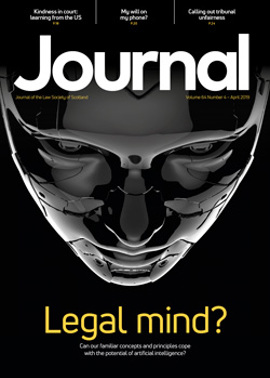Rights after “same roof”
The statutory instrument abolishing the controversial “same roof rule” has been laid before Parliament. The instrument will follow the affirmative procedure and, therefore, must be actively approved by both the House of Commons and House of Lords in order to become law. However, the legislation is expected to come into force by the end of April or early May 2019.
Background
The Criminal Injuries Compensation Scheme is made by the Secretary of State under the Criminal Injuries Compensation Act 1995. The scheme has operated since 1964 and exists to compensate victims of violent crimes in the UK. Northern Ireland operates its own scheme.
Contained in the first scheme, established in 1964, was a “same roof rule” that precluded an award for criminal injury if, at the time of the incident giving rise to the injury, the applicant and the assailant were living together in the same household or under the “same roof”.
The rule was amended in subsequent schemes, but not retrospectively. Therefore, there was no redress for those abused between 1 August 1964 and 1 October 1979 by someone living under the same roof as them.
Legal challenges
This controversial rule has been widely challenged in all jurisdictions in the UK.
The Court of Appeal in England & Wales, in JT v First-tier Tribunal and CICA [2018] EWCA Civ 1735, found that the same roof rule was unlawful discrimination and constituted a breach of the appellant’s human rights. This was in conflict with the 2017 decision of the Inner House of the Court of Session in Scotland, which had not determined that the rule was unlawful.
These conflicting decisions were overtaken by David Gauke, the Justice Secretary, committing to abolishing the same roof rule and the Government conceding the Scottish appeal to the Supreme Court.
Following the JT decision in July 2018, victims and those representing them had been unclear about the extent of the changes. Since the publication of the statutory instrument it has become apparent that the amendment not only abolishes the rule, but also makes clear that those who applied and were previously refused on the basis of the same roof rule can reapply.
Which scheme?
Of course these changes are to be welcomed. However, we must be clear that there are still issues with the 2012 scheme which is still significantly more restrictive and less generous than previous schemes. There is an argument that those previously refused should be considered under the scheme which they originally applied under. However, this is not incorporated into the new scheme and fresh applications will be bound by the rules of the new scheme. This of course is a policy decision to manage the budget. Figures published suggest that the CICA has previously refused about 4,000 applicants. It is to be hoped that the CICA contacts those affected to advise that their application can be resurrected.
The Victims' Commissioner (Baroness Newlove) in her recent published report also highlighted many areas of concern in relation to the application process, going so far as to say that the process was in danger of re-traumatising victims of crimes of violence. The Government has launched a wholesale review of the CICA scheme, and those representing victims of violent crime will be given the opportunity of feeding back issues surrounding the scheme and its operation in order to improve the experience of those who are victims of violent crime throughout the compensation process. This process should do more to heal than harm.
In this issue
- Time to promote shared care?
- Client medical records: a matter of right
- Search for the route to healing
- Rights after “same roof”
- Are you a qualified creditor?
- Reading for pleasure
- Opinion: Allan Jamieson
- Book reviews
- Profile: John Laughland
- President's column
- ScotLIS update
- People on the move
- Common law and artificial life
- FAIs: addressing the concerns
- Challenging times
- Shared humanity
- Cases of the paperless will
- How to manage your legal practice for success
- Fairness v Convenience
- Moorov then and now
- Personal licences: the uncertainty continues
- Is Airbnb use a planning matter?
- Insolvency Rules: a positive realignment
- IR35 compliance moves up the ladder
- “Best interests” in the balance
- Scottish Solicitors' Discipline Tribunal
- PSG tackles index-linked rent reviews
- Finding the right seat
- Public policy highlights
- Accredited paralegal update
- Events, and more, for members
- Accredited Paralegal Committee profile
- Second thoughts on executor declarations
- Client communication – a continuous journey
- Reflections from the Commission
- Love my tender
- Ask Ash






